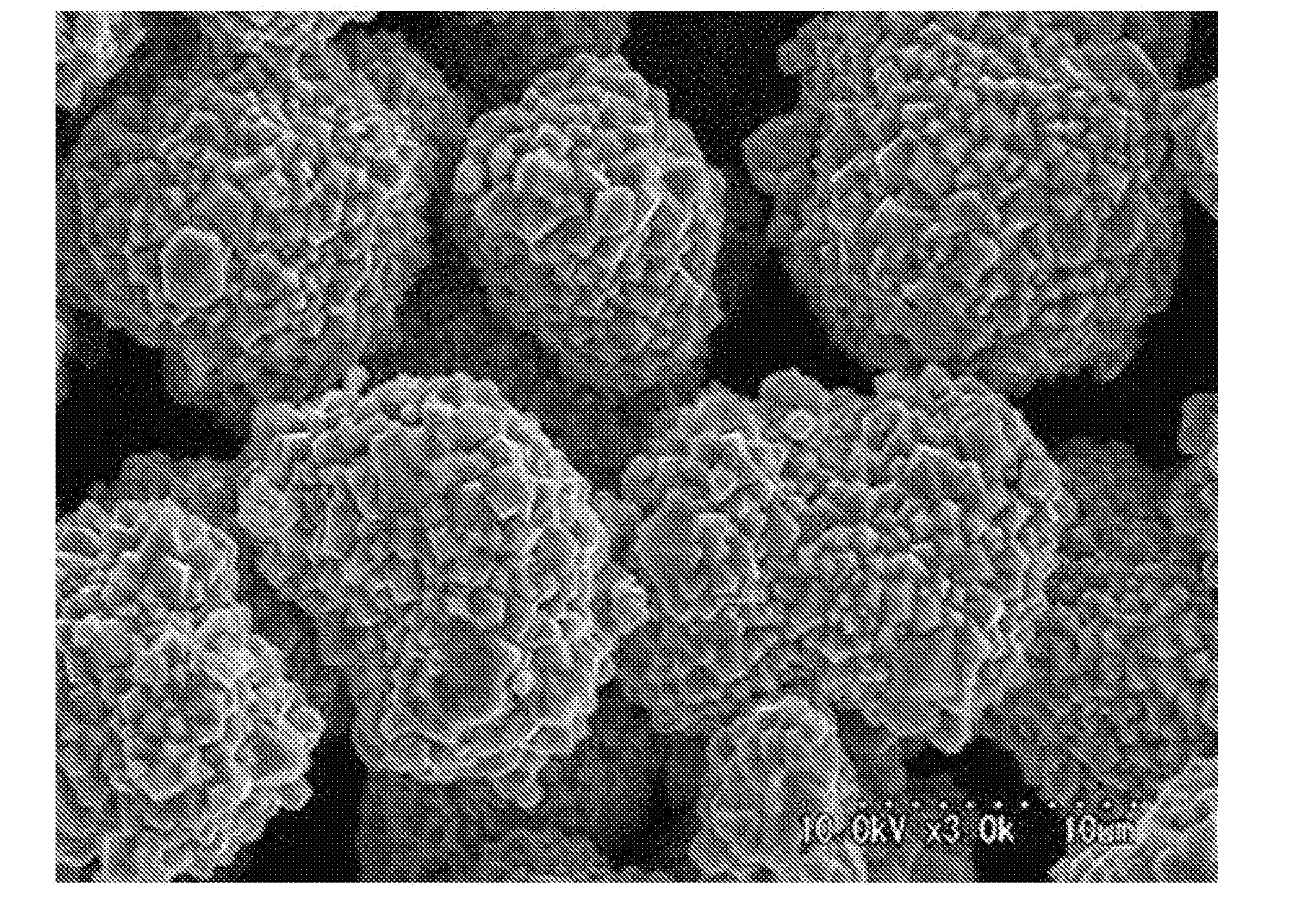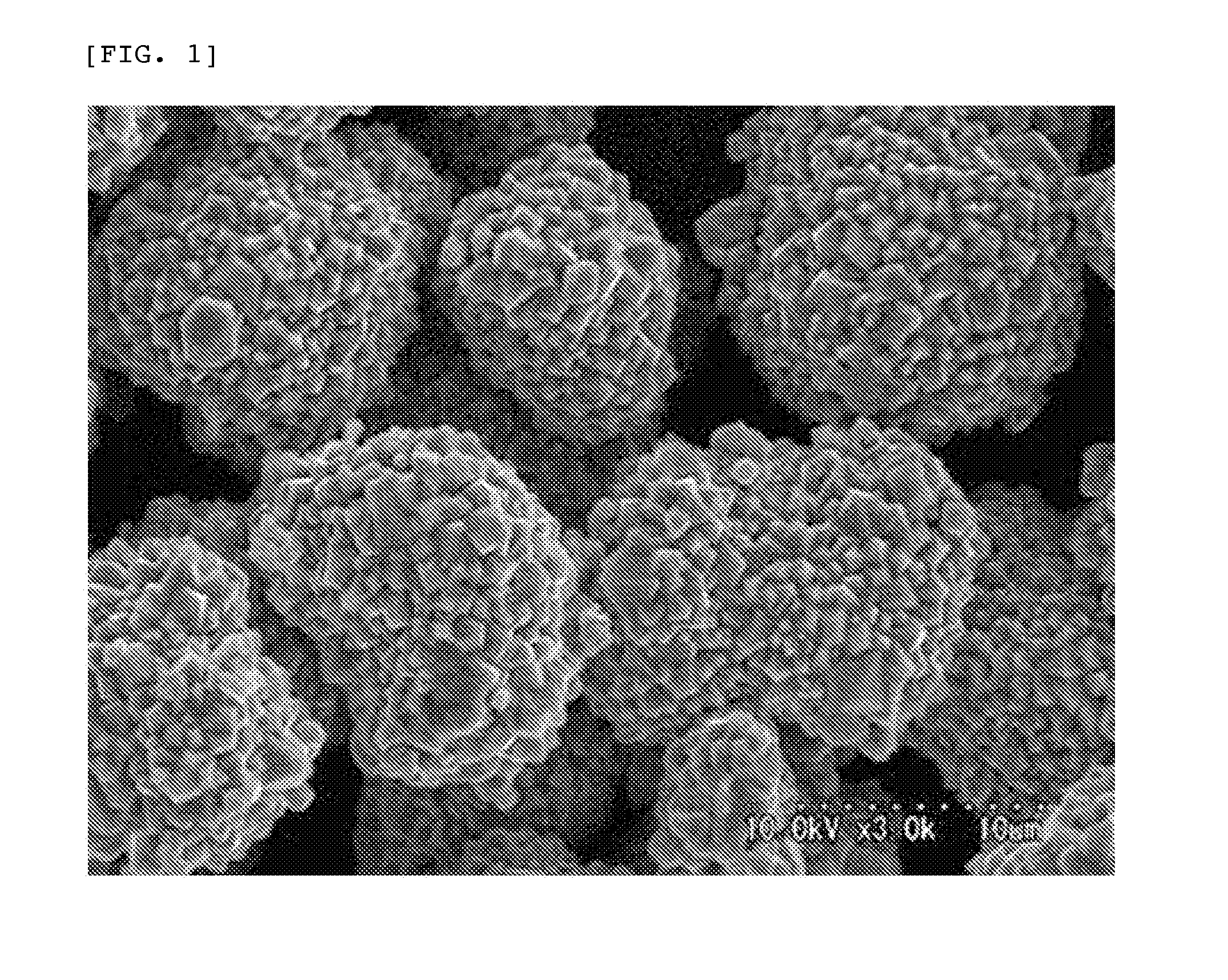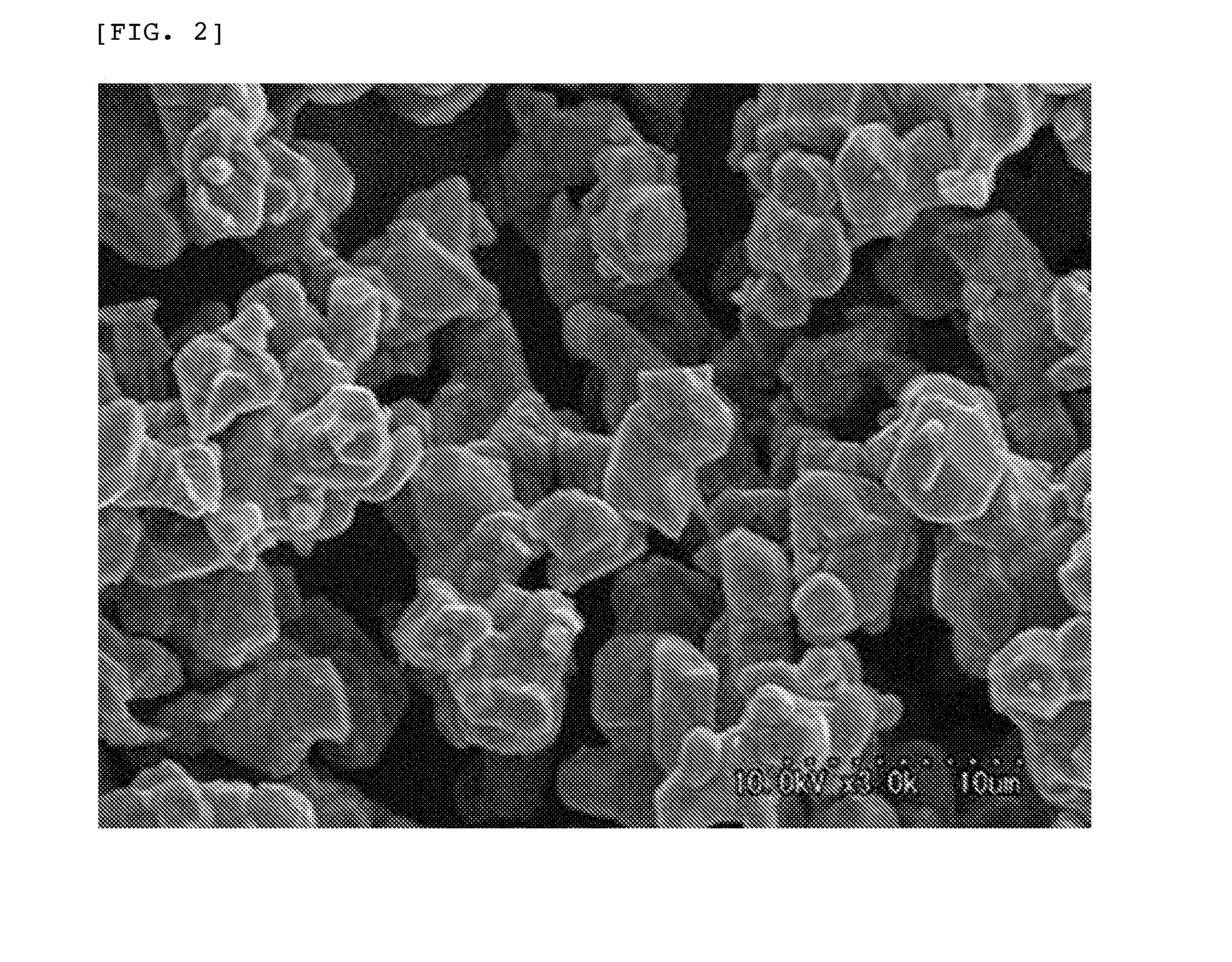Lithium manganate particles for non-aqueous electrolyte secondary batteries and process for producing the same, and non-aqueous electrolyte secondary battery
a technology of non-aqueous electrolyte secondary batteries and lithium manganate particles, which is applied in the direction of manganates/permanganates, batteries, cell components, etc., can solve the problems of poor environmental safety upon disposal of cells obtained therefrom, high production cost, and high energy density of cells, and achieves excellent high-temperature characteristics, reduces specific surface area, and small pore diameter
- Summary
- Abstract
- Description
- Claims
- Application Information
AI Technical Summary
Benefits of technology
Problems solved by technology
Method used
Image
Examples
example 1
[0078]Trimanganese tetraoxide having a crystallite size of 91 nm and an average secondary particle diameter of 10.2 μm, lithium carbonate, aluminum hydroxide and boric acid were weighed in appropriate amounts and mixed in a ball mill, and the resulting mixture was calcined at 850° C. The thus obtained lithium manganate particles had a composition of Li1.07Mn1.83Al0.1O4, and comprised 487 ppm of boron. As a result of subjecting the resulting lithium manganate particles to X-ray diffraction to identify constitutional phases therein, the particles were constituted of a lithium manganate single phase, and no impurity phase was detected therein. Therefore, it was considered that amorphous substances of Li and B were formed in the particles.
[0079]The lithium manganate had a specific surface area of 0.39 m2 / g as measured by BET method, an average primary particle diameter of 1.3 μm and an average secondary particle diameter (D50) of 15.3 μm, and the ratio of D50 to an average primary parti...
examples 2 to 6
[0081]The same procedure as in Example 1 was conducted except that the kind of trimanganese tetraoxide and the calcination temperature were variously changed, thereby obtaining lithium manganate particles.
[0082]The production conditions of the lithium manganate particles are shown in Table 1, and various properties of the resulting lithium manganate particles are shown in Table 2.
PUM
 Login to View More
Login to View More Abstract
Description
Claims
Application Information
 Login to View More
Login to View More - R&D
- Intellectual Property
- Life Sciences
- Materials
- Tech Scout
- Unparalleled Data Quality
- Higher Quality Content
- 60% Fewer Hallucinations
Browse by: Latest US Patents, China's latest patents, Technical Efficacy Thesaurus, Application Domain, Technology Topic, Popular Technical Reports.
© 2025 PatSnap. All rights reserved.Legal|Privacy policy|Modern Slavery Act Transparency Statement|Sitemap|About US| Contact US: help@patsnap.com



